Project Description
Project Description
Navigating government services in Australia is complex, fragmented, and intimidating — especially for youth, seniors, new citizens and residents, and digitally inexperienced groups. Whether lodging taxes, enrolling to vote, or accessing local support, Australians face confusing systems and overwhelming information. Meanwhile, trust in digital platforms is eroding, and misinformation is rising—leaving the most vulnerable behind.
GovWise is an AI-powered assistant for navigating government services. It combines smart roadmaps, adaptive explanations, proactive support, and transparent data use. It adapts explanations by age, language, and background, while showing exactly why information is reliable, citing official datasets such as the ATO, ABS, and AEC.
Problem
🔹Existing government chatbots are often generic, not personalised or context-aware.
🔹Agencies like the ATO provide comprehensive online instructions, but the sheer volume overwhelms many users.
🔹Elders rely heavily on tax agents, while younger people self-prepare, creating inequality in digital confidence.
🔹New citizens, Indigenous Australians, and youth remain under-enrolled or less engaged in democratic processes.
🔹Digital inclusion scores fall sharply with age, education gaps, and disability.
🔹Misinformation and scams further erode digital trust.
Solution
Unlike a plain chatbot, GovWise:
🔹Explains simply (adapts to age, background, literacy).
🔹Guides visually (smart roadmaps instead of walls of text).
🔹Acts proactively (reminders, booking help, nudges).
🔹Builds trust (every answer cites official datasets, no hallucinations).
→ It’s an AI assistant + roadmap generator + service agent.
Key features
🔷Personalised AI Assistance Chatbot – Tailored to each user’s profile (age, language, literacy, background).
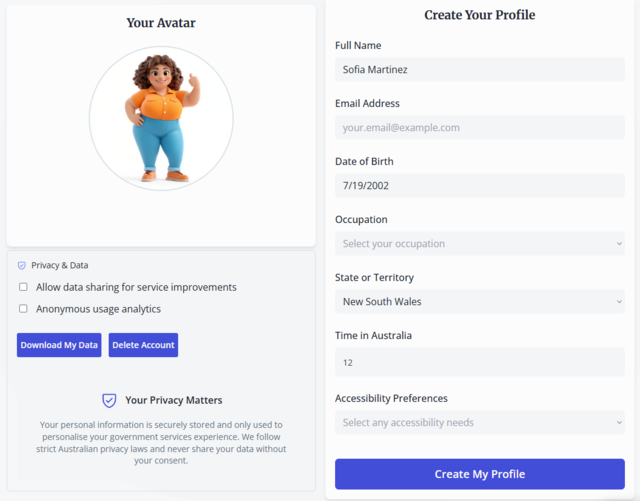
🔷Agentic Actions (simulated) – Booking, reminders, and pre-filling forms (shown in storyboard).
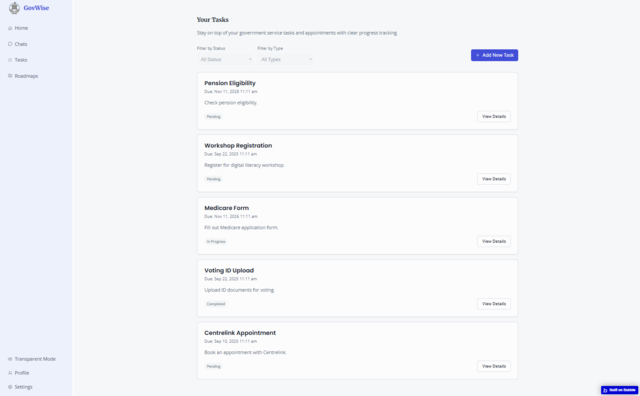
🔷Life-Event Navigation – Guided support for scenarios like “I lost my job” or “I’m retiring.”
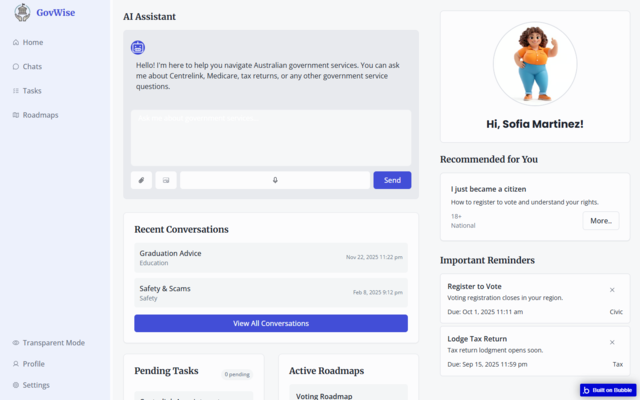
🔷Smart Roadmaps – Step-by-step guides for services such as tax returns, voting, and volunteering.

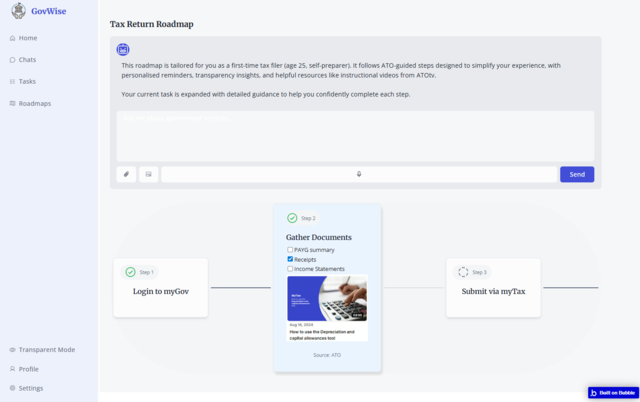
🔷Adaptive Explanations – Same process explained differently for a 20-year-old, a 70-year-old, or a new migrant.

🔷Transparency Mode – Every response cites its source (ATO, ABS, AEC).
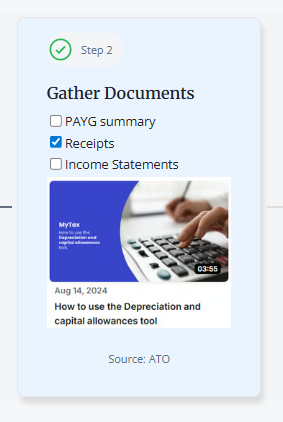
🔷Accessibility Options – Large text, high-contrast, multilingual, SMS fallback, and voice interaction.
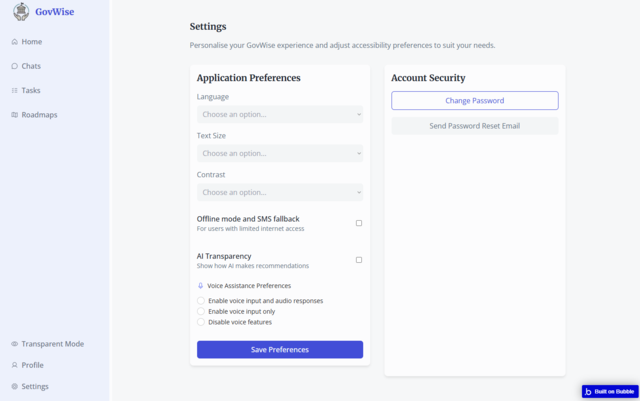
Storyboard demo (1/3)
See more in GoogleDrive
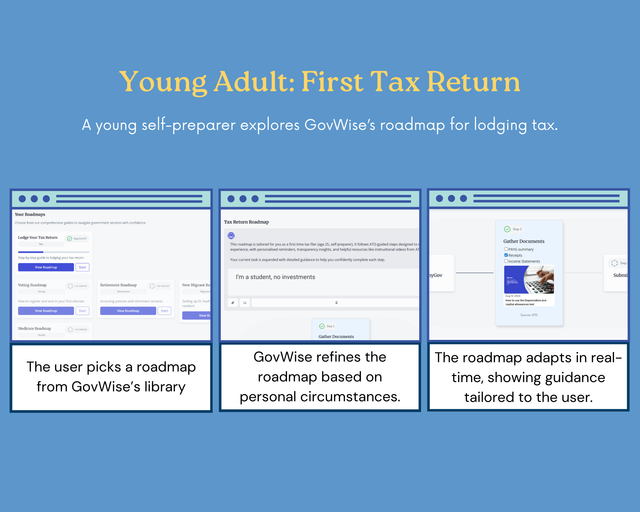
Impact
🔷For citizens and residents
🔹Tax: Young Australians get simplified roadmaps for self-prepared returns, while seniors receive agentic support to reduce reliance on tax agents. This lowers stress and improves compliance.
🔹Digital Inclusion: Adaptive explanations, accessibility features (large text, high-contrast, SMS fallback), and scam alerts close the confidence gap for older adults, people with disabilities, and those with lower education.
🔹Civic Engagement: New citizens and Indigenous Australians are supported with clear voting roadmaps, multilingual guidance, and reminders — helping lift enrolment and turnout closer to national targets.
🔷For government
🔹Increased efficiency in tax compliance, reduced errors in returns, and better service uptake by underrepresented groups.
🔹Higher enrolment and turnout rates, particularly for youth, new citizens, and Indigenous Australians.
🔹Stronger trust in digital platforms through transparency.
🔷For society
🔹A more inclusive democracy where all groups feel able to participate confidently.
🔹Narrowed digital divide, especially for vulnerable populations.
🔹Stronger social connection and trust in institutions — essential for resilience in a digital age.
GovWise ensures that no Australian is left behind — whether they’re lodging their first tax return, enrolling to vote, or simply learning to navigate online safely.
Data Story
Our solution is grounded in eight official datasets from the ATO, ABS, the Australian Digital Inclusion Index, and the AEC. Together, they highlight the participation gaps in tax, digital inclusion, and civic engagement — and show why an inclusive, transparent AI assistant is needed.
1. ATO – Taxation Statistics 2022–23, Table 2A
Young adults are more likely to self-prepare tax returns, while seniors overwhelmingly rely on tax agents. Overall, ~60% of people depend on agents.
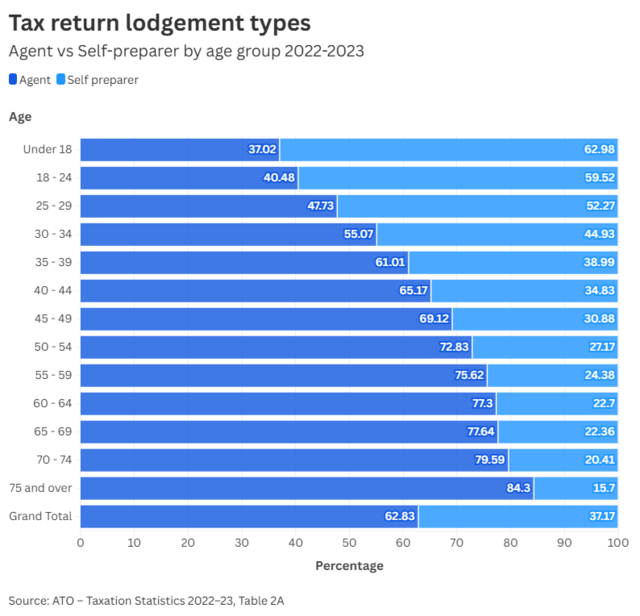
2. ABS – Digital Preparedness (2020–2022)
Digital preparedness has steadily improved across all categories from 2020 to 2022.
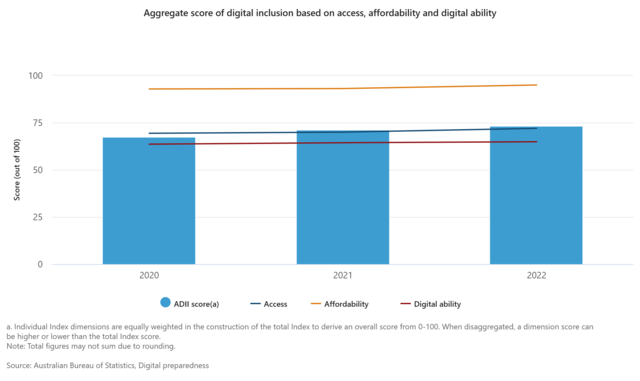
3. Australian Digital Inclusion Index – Age Gaps
Australians aged 65+ score significantly lower on digital inclusion, with gaps widening compared to younger cohorts in 2023.
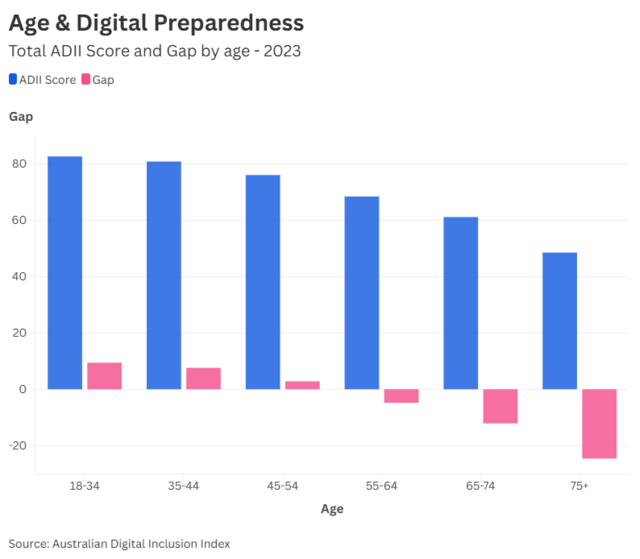
4. Australian Digital Inclusion Index – Education Gaps
Higher education levels strongly correlate with higher digital inclusion and smaller gaps.
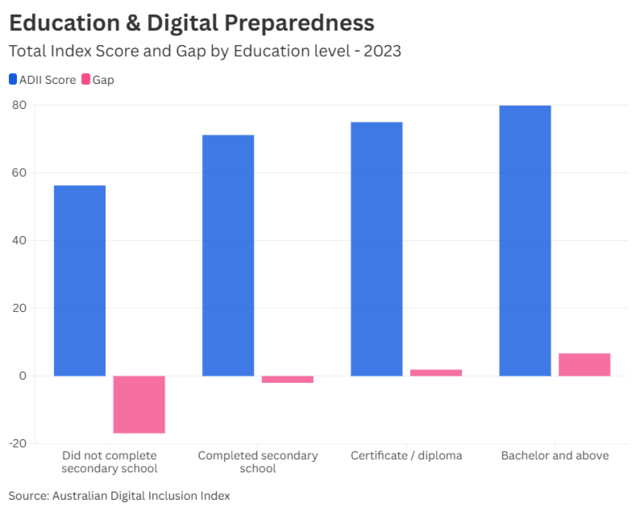
5. Australian Digital Inclusion Index – Disability Gap
People with disabilities score ~12% below the national average, showing persistent barriers to participation.
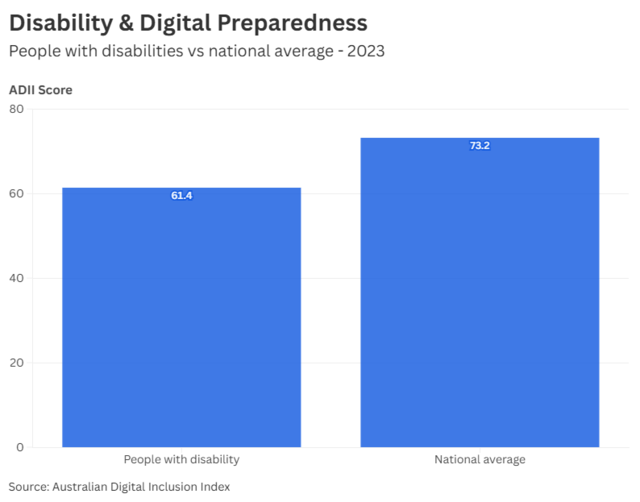
6. AEC – Turnout by State (2025 Federal Election)
TAS, VIC, and ACT record the highest turnout rates. NT lags significantly behind, highlighting regional disparities.
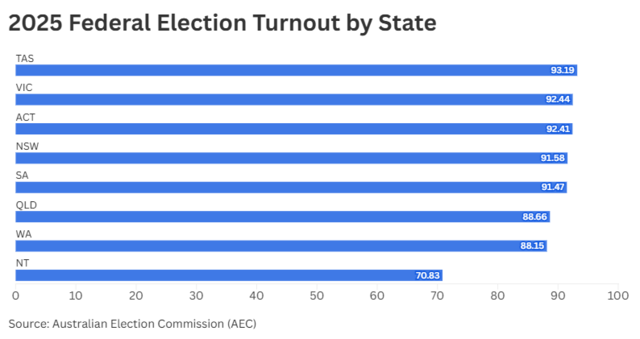
7. AEC – Enrolment Totals 2017–2024 (Youth, New Citizens, Indigenous, National)
Indigenous enrolment has increased steadily, while youth and new citizen enrolments remain largely stable below national levels.
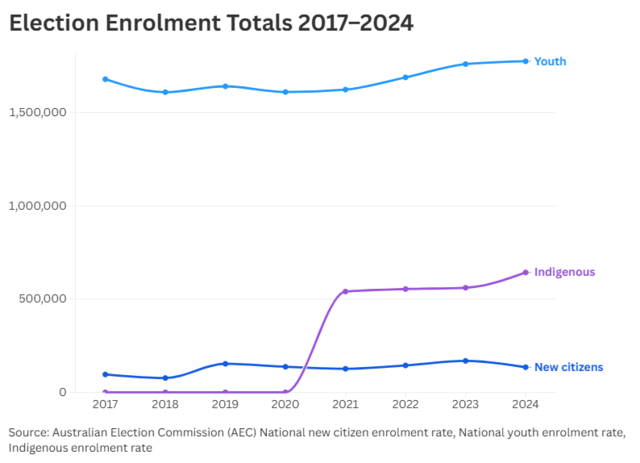
8. AEC – Enrolment Rates in June 2024
Youth, new citizens, and Indigenous enrolment rates all fall short of the national enrolment target.
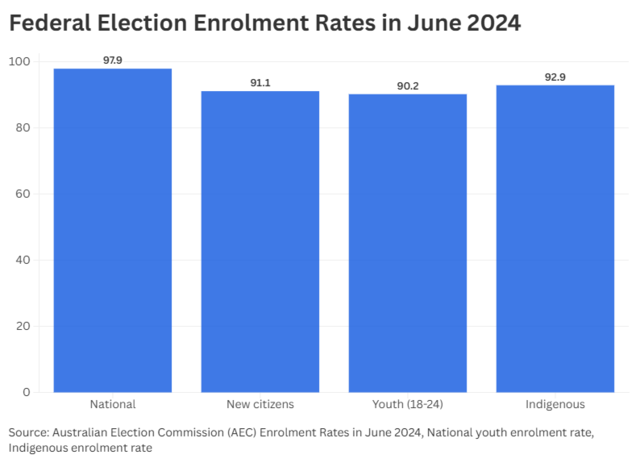
📊 Together, these datasets paint a clear picture:
Tax: Seniors need more support, while younger Australians benefit from self-preparation tools.
Digital inclusion: Age, education, and disability strongly influence confidence online.
Civic engagement: Indigenous enrolment is improving, but youth and new citizens lag behind.

















